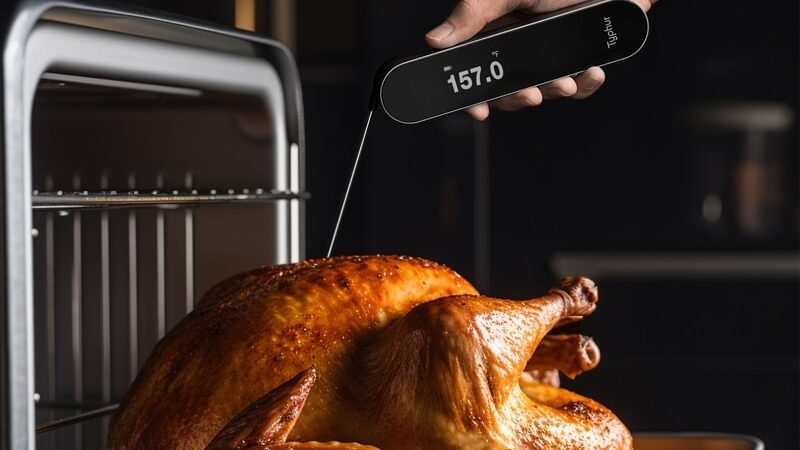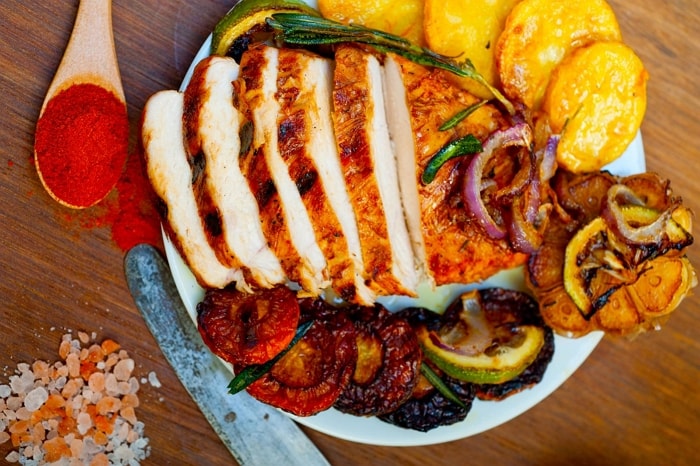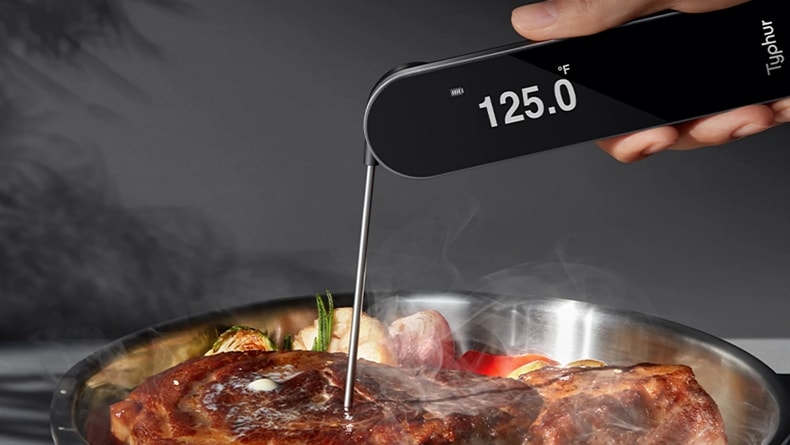
Did you know? According to data from the Centers for Disease Control and Prevention, harmful bacteria in food cause around 48 million people in the United States to fall ill each year, leading to roughly 3,000 deaths [1].
How Do Bacteria Get in Food?
Microorganisms are naturally present in our environment and may be present in food products when you purchase them.
Not all bacteria will cause disease, some of which are used beneficially in making cheese and yogurt. Only pathogens entering the food supply can cause foodborne illness.
Even foods that are safely cooked and ready to eat can be cross-contaminated with pathogens. This can happen when they come into contact with raw eggs, raw meats, poultry, seafood, juices, or other contaminated items, as well as through poorly hygienic food handlers.
Most cases of foodborne illness can be prevented by proper cooking or processing of food.
Why Use a Food Thermometer?
Seeing isn’t Believing. Color and texture changes in food are not enough to be sure. USDA research shows that 1 in 4 hamburgers turns brown before achieving a safe internal temperature. The sole reliable method to confirm if meat, poultry, and egg dishes are fully cooked is by using a food thermometer!
All individuals are susceptible to foodborne illnesses. One reliable method to prevent such illnesses is to use a food thermometer to check the internal temperature of meat, poultry, and egg dishes. This practice not only safeguards your family from foodborne pathogens but also prevents overcooking, ensuring a safe and delicious meal.

Certain groups of people, including pregnant women, their unborn babies and infants, young children, older adults, individuals with compromised immune systems, and those with specific chronic illnesses, are particularly at risk for foodborne illnesses. These groups should pay more attention to the safe internal temperature of food.
Safe Minimum Internal Temperature
In line with USDA guidelines, all foods must reach the Safe Minimum Internal Temperature, as determined by a food thermometer, before they are removed from the heat. Adherence to this rule is particularly significant for the above-mentioned high-risk groups to ensure food safety.
| MINIMUM DONE TEMPS FOR FOOD SAFETY | |
|---|---|
| Ground Meats | 160°F/71°C |
| Ground Poultry | 165°F/74°C |
| Ham, fresh or smoked (uncooked) | 145°F/63°C |
| Fully Cooked Ham (to reheat)* | 165°F/74°C |
| Poultry | 165°F/74°C |
| Fish & Shellfish | 145°F/63°C |
| Egg Dishes | 160°F/71°C |
| Casseroles & Leftovers | 165°F/74°C |
| * Reheat to 140°F (60°C) if hams are packaged in USDA-inspected plants | |
Chef-recommended Temperature
Chef-recommended temperatures are consistent with many reliable sources for taste and safety. USDA-recommended temperatures are 5 to 10°F (2 to 5°C) higher.
| CHEF-RECOMMENDED TEMPS | |||||
|---|---|---|---|---|---|
| Rare | Med. Rare | Medium | Med. Well | Well Done | |
| Beef, Veal & Lamb (Roasts, Steaks & Chops) | 120-130°F49-54°C | 131-135°F55-57°C | 136-145°F58-63°C | 146-155°F 64-68°C | 156°F and up 69°C and up |
| Pork (Roasts, Steaks & Chops) | Not Recommended | Not Recommended | 143-147°F62-64°C | 148-152°F65-67°C | 153°F and up68°C and up |
| Brisket, Pork butt & Ribs | Not Recommended | Not Recommended | Not Recommended | Not Recommended | 190-205°F88-96°C |
| Salmon & Other Fatty Fishes | Not Recommended | 115°F46°C | 125°F52°C | 135°F57°C | 145°F63°C |
| Sea Bass & Other Lean Fishes | Not Recommended | 125°F52°C | 130°F54°C | 135°F57°C | 140°F60°C |
| Note: These are ideal peak temperatures. Remove your food from heat 5-10°F (2-5°C) lower and let it rise during resting. Chef-recommended temperatures align with many expert sources for both safety and taste. | |||||
Reference
[1] https://www.fda.gov/food/consumers/what-you-need-know-about-foodborne-illnesses








